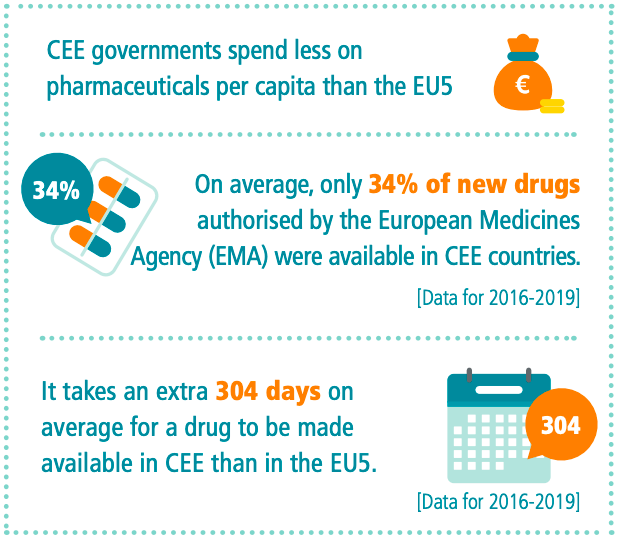Improving Central and Eastern Europe health systems’ resilience and outcomes through higher and more efficient healthcare spending
A new report highlights the need for increased healthcare spending in CEE countries and explores ways to increase efficiency as one potential source to cover existing financing gaps.
Faced with unprecedented challenges such as the current pandemic as well as an ageing population and increasing burden of chronic diseases, our health systems need to both strengthen their resilience to future shocks and meet increased demand for healthcare, while staying sustainable over time. Whilst we need to keep investing in our health systems, there are also opportunities to make healthcare spending more efficient in order to improve long-term outcomes within the available budget.
A new report commissioned to PwC highlights the need for increased healthcare spending in Central Eastern Europe (CEE) countries and explores ways to increase efficiency as one potential source to cover existing financing gaps.

Download the report and the infographic
The COVID-19 pandemic has reminded us of the direct correlation between a healthy population and a prosperous economy, as well as the need for resilient healthcare systems supported by adequate funding. Public healthcare spending in CEE countries has grown over time, but at a slower pace than GDP growth and today the average public spending per capita can be up to 5 times lower than in the EU5*. Already scarce resources are not always spent efficiently, which overall results in poorer access to healthcare, including innovative medicines. Patients in CEE countries have access to twice fewer innovative medicines, after waiting much longer than those living in EU5 countries. This contributes to poorer health outcomes: although life expectancy in CEE has improved greatly over the past 60 years, it is still 5 years less than in the EU5 and patients suffering from cancer or cardiovascular diseases have lower chances of survival.
Recognising that spending on healthcare is an investment in the future of our societies, an enabler for economic growth and fiscal sustainability, budgets should increase at least at the same pace as the overall economic growth. While it is up to each healthcare system to define the most appropriate spending mix, considering their solid track record in improving health outcomes and delivering savings in other parts of healthcare, CEE countries should consider allocating additional resources to support improved access to innovative medicines as a way to improve efficiency of spending.
Increased healthcare spending will only deliver the expected outcomes if it is efficient. Therefore, the report also outlines several systemic reforms that should be explored at national level. These include the digitalisation of health systems, stronger community-based care, measures to increase efficiency of pharmaceutical spending and enhancing access to innovative medicines (effective generic/biosimilar competition, novel pricing models), increasing adherence to medication to avoid waste, integrated financing streams across the system (e.g. primary & secondary care), better analytics, information sharing and horizon scanning to support more efficient budget allocation decisions.
“Underinvestment in healthcare together with inefficiencies in the way available resources are allocated are important factors in persisting gaps in access to healthcare and innovative medicines between countries. Unfortunately, these issues will not be solved by the solutions being discussed within the EU Pharmaceutical Strategy. It is important to note that CEE countries have a unique opportunity given that the impact on patient outcomes from every Euro invested efficiently in healthcare can be higher than in Western countries. To really make a difference and to ensure the sustainability of our social protection systems in light of the demographic challenges facing many of these countries, it is vital to prioritize investment in healthcare, have courageous discussions about the right spending mix and drive bold systemic reforms that can make healthcare spending more efficient. We are committed to engaging collaboratively with all stakeholders to reach this ambitious goal” said Nathalie Moll, EFPIA Director General.